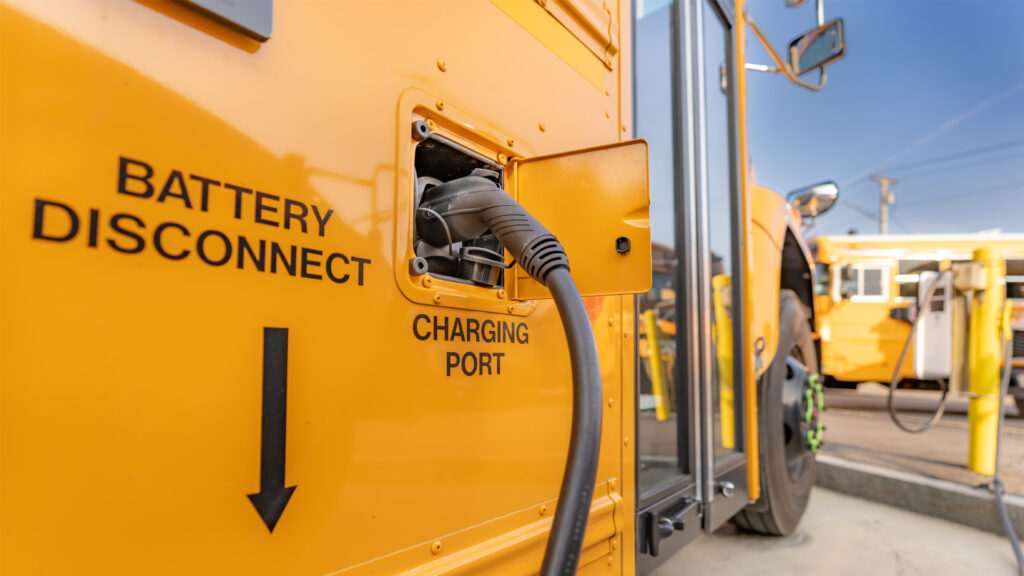By Uyen Dang, DDEC
As a transportation engineer working closely with local governments to achieve mobility and environmental goals, I strongly encourage school districts to embrace the transformative potential of electric school buses. Transitioning to these innovative vehicles offers a unique opportunity to improve air quality, reduce noise pollution and foster healthier environments for children — all while setting an inspiring example for building more sustainable communities.

Traditional diesel school buses, long regarded as a staple of student transportation, emit high levels of harmful pollutants. These emissions contribute to respiratory illnesses such as asthma, disproportionately affecting children, whose developing lungs are especially vulnerable to air pollution.
Electric school buses produce zero tailpipe emissions, directly addressing this health risk. Cleaner air leads to healthier students, which not only enhances their overall well-being but supports better focus and academic performance in classrooms.
Noise pollution is another overlooked issue that electric buses can help mitigate. Diesel buses are loud, causing stress and distraction for both students and drivers. By contrast, electric school buses operate quietly, creating a more serene and focused environment during commutes.
Reduced noise levels also improve safety, enabling drivers to hear and react more effectively to road hazards. Moreover, this quieter operation promotes a sense of calm in the neighborhoods they serve, contributing to improved cognitive development and reduced stress levels for children.
Although the upfront cost of electric school buses might seem significant, the long-term economic benefits are undeniable. These vehicles offer lower fuel and maintenance costs compared to diesel alternatives, leading to substantial savings over their lifespan.
Additionally, school districts can leverage state and federal funding programs, including grants and subsidies, to offset initial expenses. Some companies provide tailored solutions to help districts navigate the transition seamlessly, making the adoption of zero-emission buses more accessible and affordable.

Across Florida, many counties are taking bold steps to reduce greenhouse gas emissions. Transitioning to electric school buses plays a pivotal role in these efforts. For example, Broward County has set ambitious environmental targets, including achieving net-zero greenhouse gas emissions by 2050.
Local initiatives such as the Broward Electric Vehicle Charging Infrastructure (EVCI) project and the school district’s shift toward electric buses illustrate the power of collaboration between government and education systems. These programs not only accelerate progress toward sustainability but inspire other regions to pursue similar innovative solutions.
Adopting electric school buses goes beyond transportation — it’s a statement of a school district’s commitment to the health, safety and future of its students and community. These buses are more than just vehicles. They represent a movement toward sustainability, innovation and responsibility for future generations.
The transition to electric school buses aligns with broader goals of environmental stewardship and public health. By prioritizing this shift, school districts can create lasting benefits for children, families and communities, paving the way for a greener, healthier and more sustainable future.
Uyen Dang, former city traffic engineer for West Palm Beach, is the founder and principal at DDEC, a traffic and transportation engineering firm that helps local governments achieve their transportation goals. This opinion piece was originally published by the Palm Beach Post, which is a media partner of The Invading Sea. Banner photo: School buses in a parking lot. (iStockphoto image).
Sign up for The Invading Sea newsletter by visiting here. To support The Invading Sea, click here to make a donation. If you are interested in submitting an opinion piece to The Invading Sea, email Editor Nathan Crabbe at ncrabbe@fau.edu.



